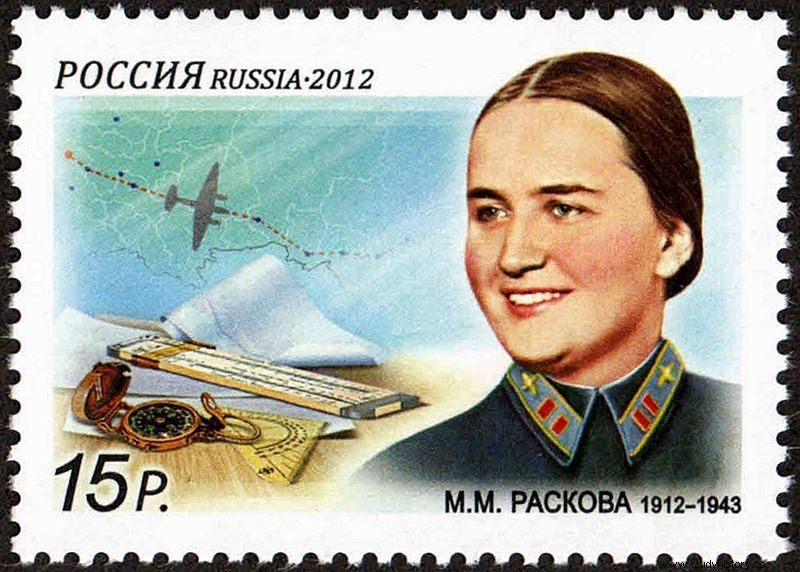The ideology of the Nazi leaders was always punctuated by esotericism and magic, but if they ever had real reasons to believe in witches, those responsible were the Nachthexen (night witches). This is what the Germans called the military aviators of the 588th Night Bombardment Regiment of the Soviet Union .
On November 2, 1938, Polina Osipenko , Valentina Grizodúbovatres and Marina Raskova received the distinction of Heroines of the Soviet Union for several records in flight distance; they were the first women to receive it and the only ones before the start of World War II. Marina Raskova, who had also been the first female instructor at the Air Academy, was personally interviewed by Stalin and awarded the rank of Major.

Marina Raskova
When Hitler broke the Non-Aggression Pact with the Soviet Union, Marina led a campaign so that women too could fight the Germans in the air. In 1941, and thanks to her friendship with Stalin, she achieved her goal:three Air Regiments composed only of women were created… among them the 588th Night Bombardment Regiment. This Regiment was made up of about 400 women, including pilots and ground personnel, and they had an average age of 22 years. When Marina met all of them, she was scared that such young women could die…
Aren't you afraid to go to the front? Don't you know that the Germans can kill you? – asked the Major
Not if we shoot them first, Major Raskova – they answered in unison.
The Germans were advancing rapidly, and the apprenticeship that took several years at the Air Academy was reduced to a few months… they had to undergo hard physical training and a crash course in combat tactics, but none of them complained about it. In addition, the planes assigned to the Night Bombardment Regiment were the Polikarpov U-2 (Po-2) , the most produced biplane in the world, initially created for flight practices and field fumigation.

Po-2
The problem with these planes is that they were too slow, obsolete -made in 1927- and that they were made of wood and canvas. Those «flying brooms «, without radio or parachute -they said that they preferred to die than fall into the hands of the Germans-, they carried two crew members (pilot and navigator) and had capacity for two bombs that, on some occasions and due to the obsolete launch systems, they had to throw by hand. In principle, they had no chance against the fast German fighters, but their maneuverability allowed them to make sharp and rapid turns that greatly hindered the possibility of being shot down. Furthermore, their slowness allowed them to fly low enough to fly through woods where German fighters could not access.
Due to their low carrying capacity, the night witches They carried out several operations in the same night, always following the same tactic:when they got close to the objective, they stopped their noisy engines and glided until they reached the objective, dropped the bombs and started them again to get out of there.
It was simply incomprehensible to us that the Soviet pilots who gave us so much trouble were…. women. These women feared nothing. They came night after night in their rickety planes…
From 1941 to the end of the war, the women of this Regiment carried out 23,672 missions and dropped more than 3,000 tons of bombs. Up to 23 «night witches » were decorated by the Soviet Union. Major Raskova died on a mission in 1943. Other named aviators were:Nadya Popova and her crew member Katya Ryabova they managed to carry out 18 missions in one night; Lieutenant Irina Sebrova she took part in 1,008 missions and survived both times she was shot down by making it to her base.
Even if it were possible to gather and lay at his feet all the flowers on earth, it would not be a sufficient tribute to his valor.

Popova and Ryabova
